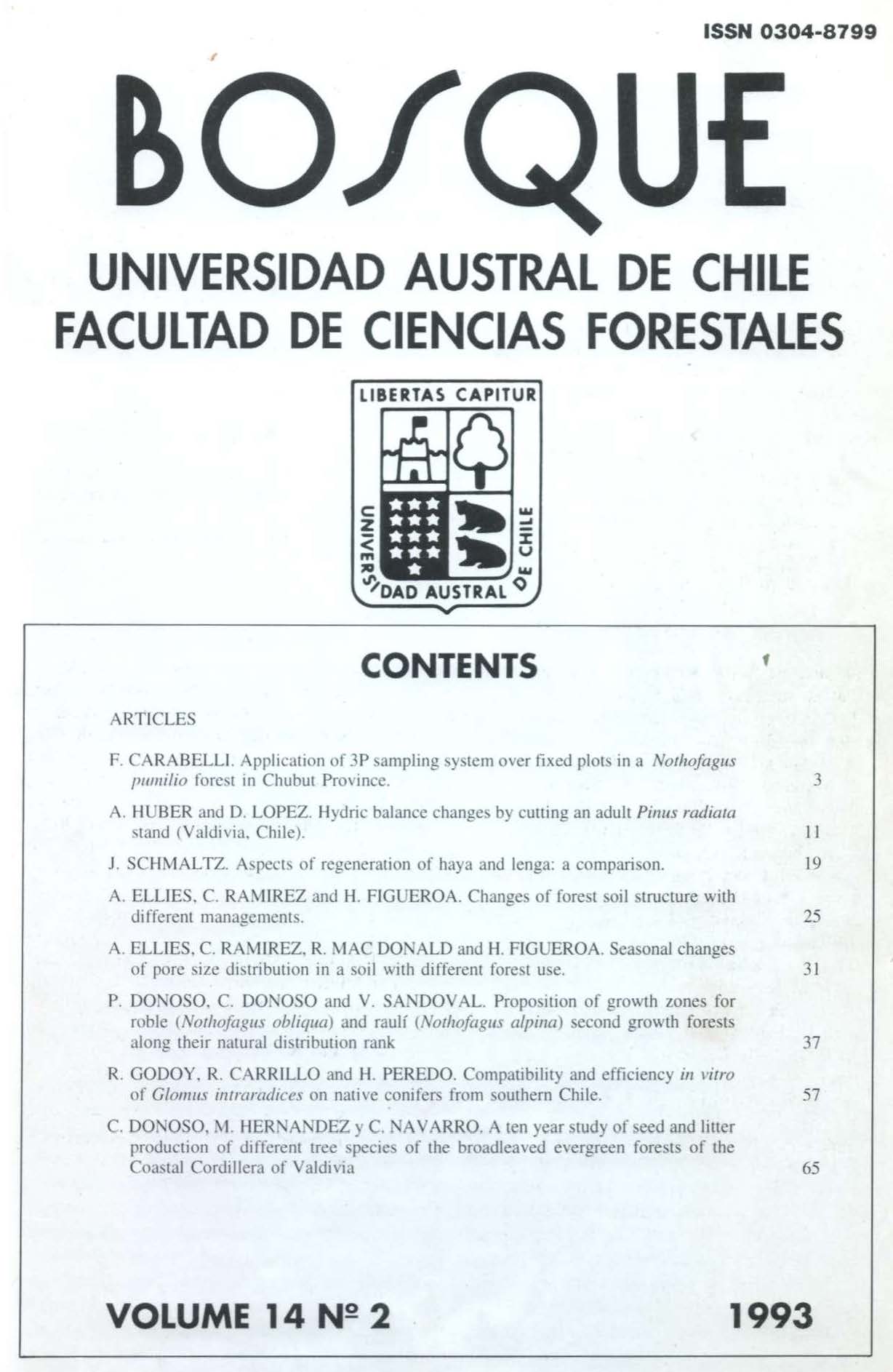Proposition of growth zones for roble (Nothofagus obliqua) and raulí (Nothofagus alpina) second growth forests
Main Article Content
Abstract
This study evaluated and characterized growth of second growth forests of roble (Nothofagus obliqua) and raulí (Nothofagus alpina) in 40 different locations between 35° and 41° south latitude.
The second growth forests were clustered for each species in 4 growth zones. Most of these forests are between 30 and 49 years old and have an important composition of shade tolerant species growing together with the Nothofagus species. Roble presents better growth than raulí in the best growth zone of each lot, but raulí has a more homogeneous growth.
In the best zones, roble reaches an average of 12.26 m3 /ha/year and raulí 10.44 m3 /ha/year, at an age of 20 years. In diameter, the differences among the growth zones are clear until 35 years old, after which growth is about the same. In height, there are differences for all the period studied among the different growth zones.
Raulí growths in colder areas than roble, but the best growth zones of raulí are in those areas where roble still growths, this is, in more temperate climate.

